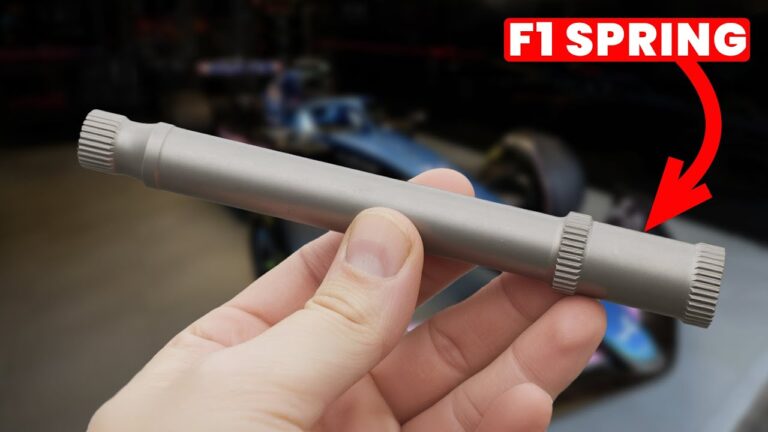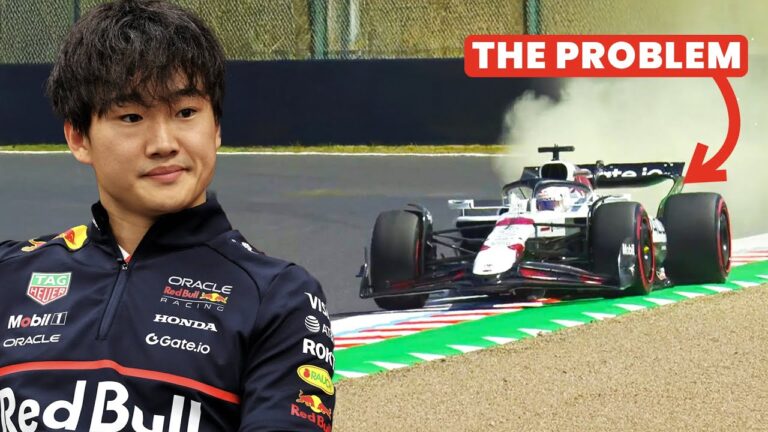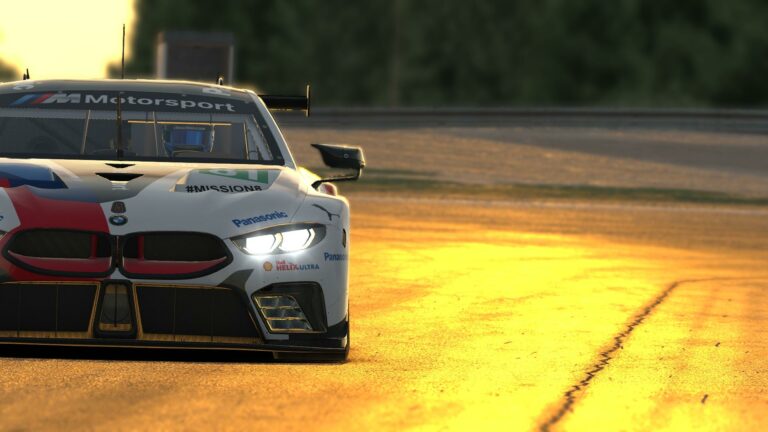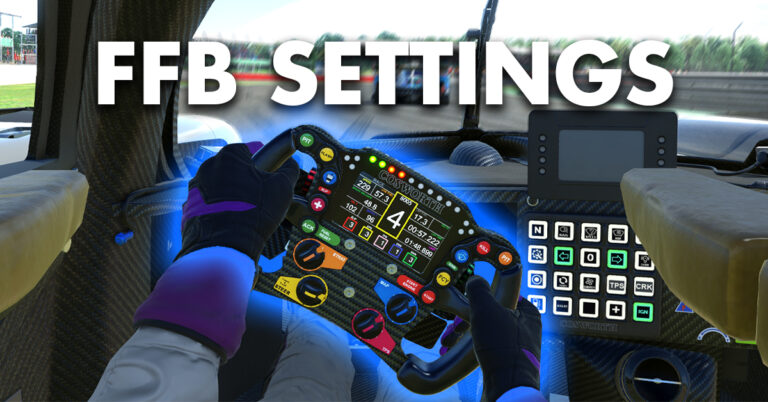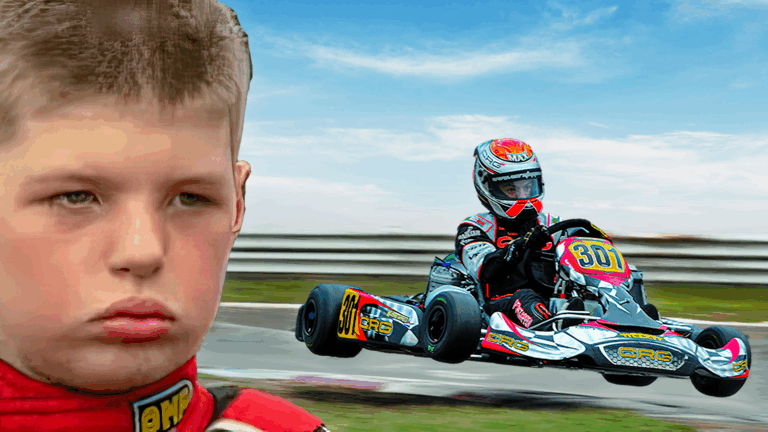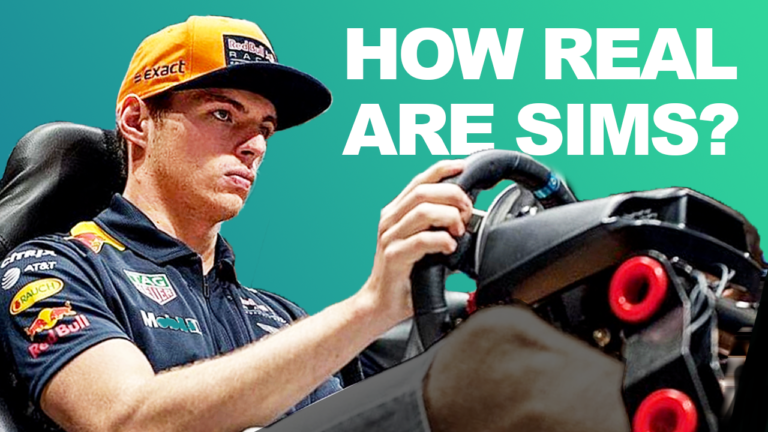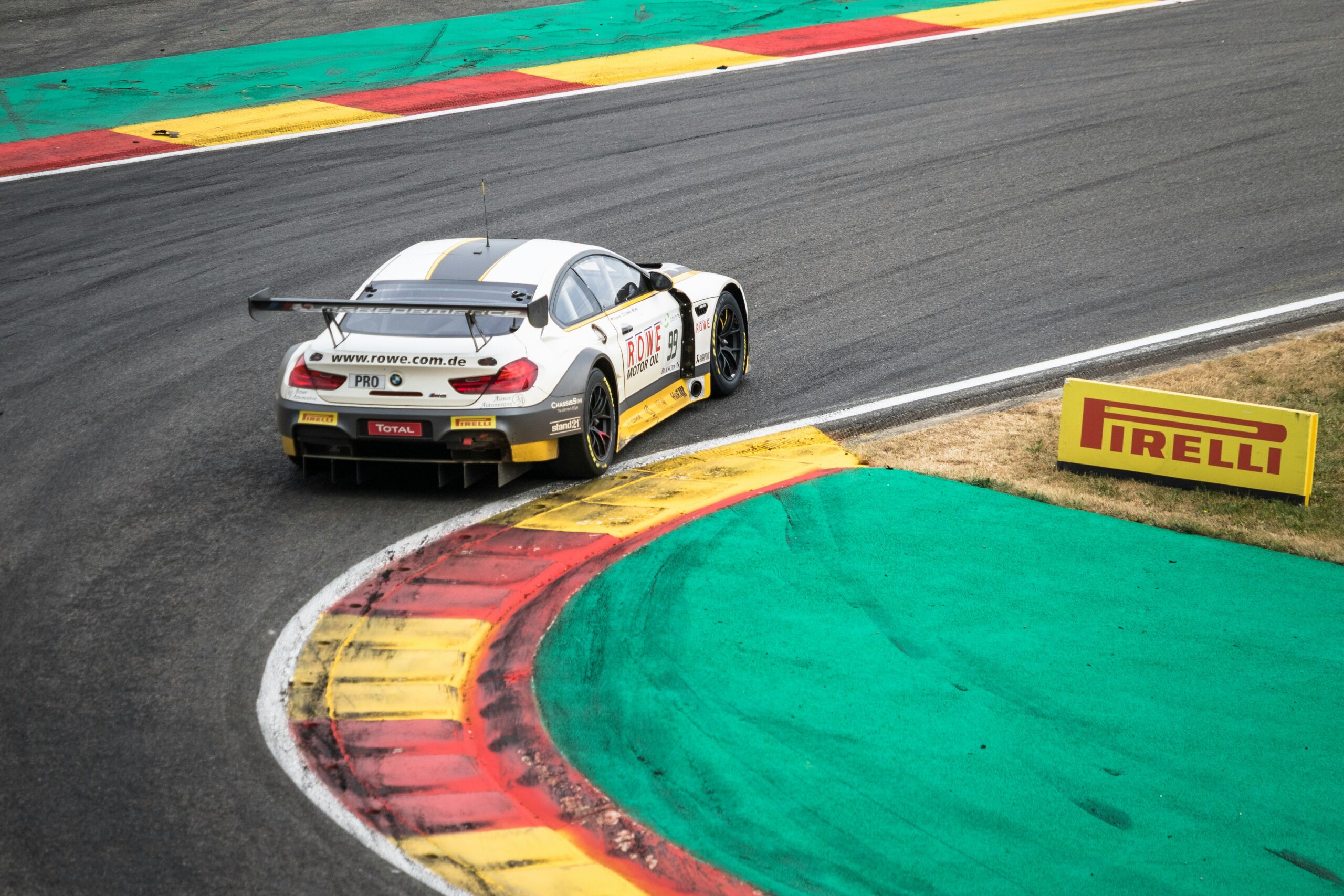
Why does it always seem like the same drivers make it on the front row? Well, there is a skill that comes to qualifying that not all drivers have perfected.
Finding space, sacrificing vs optimising and understanding every nuance of your car will help support that one flying lap. Within this article, Driver61 will guide you through some of the highest-rated tips for perfecting a qualifying lap in sim racing.
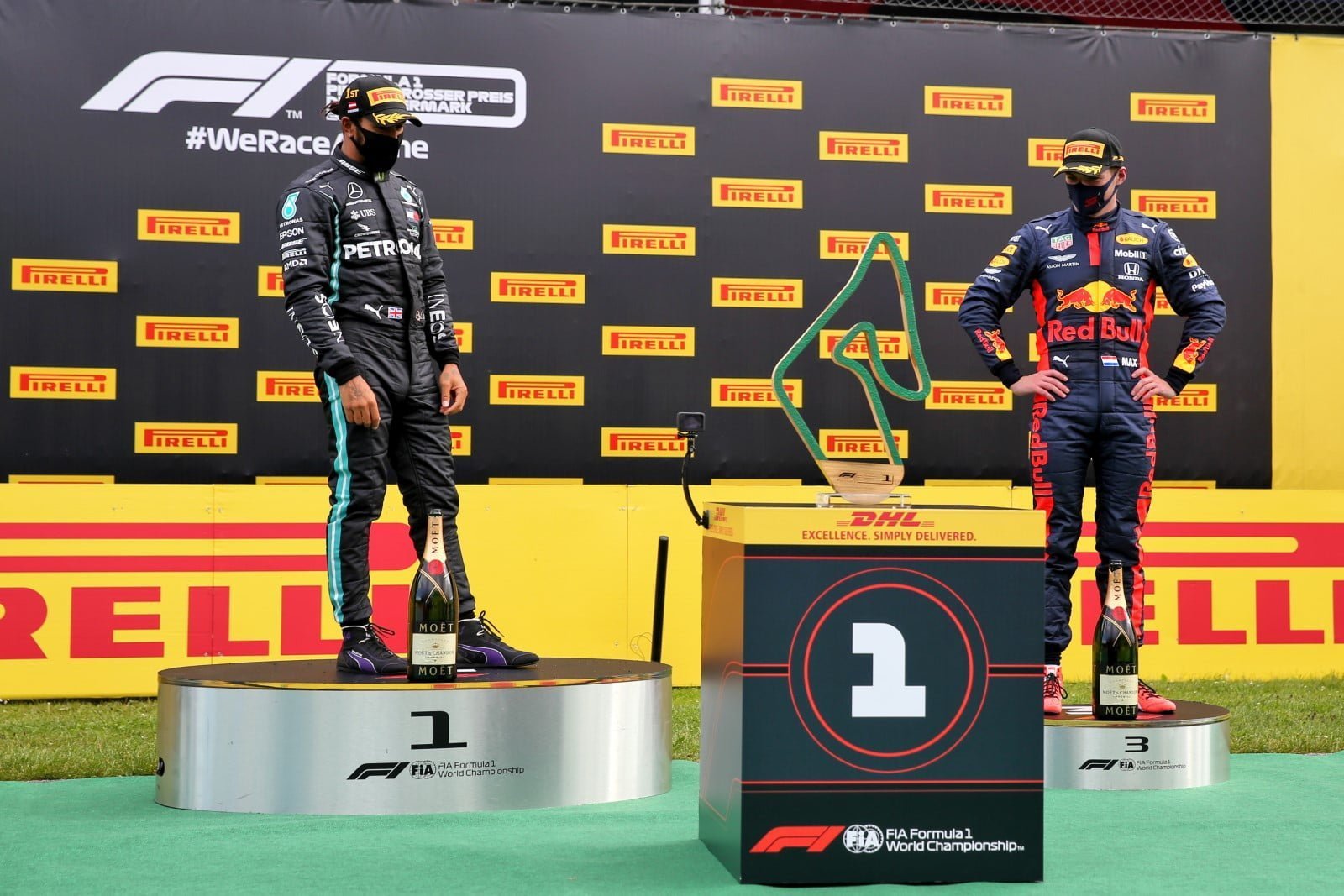
These techniques have been tailored toward sim racing from a breadth of real-world motorsport and E-sports drivers to ensure that you can compete with the best. The following tips should help shave tenths off your qualifying lap times and hopefully get you to the front of the grid.
Be ready to study
The objective of qualifying is to set one lap time, faster than your opponents. It only has to be one lap. For you to be the quickest, you must have an advantage over your rivals in every aspect.
Car setup, driver technique and track knowledge are the fundamental skills to making you a quick driver over one lap.
Studying, in this context, can be defined as preparing your car, your mind and your knowledge in the best way possible to ensure an optimal lap. In a qualifying session, it is important to learn the track, either physically (by driving around it a number of times) or by watching track talks, onboard videos or data telemetry.

Drvier61 focuses on the popular race circuits within the UK and Europe, giving detailed and concise track guides. Tutorials like these offer an initial place of study. Learn the track! Even if you can’t physically drive it. You can find these here
Learning the track before you drive it is critical to nailing qualifying and another area of study you can focus on, is knowing your competitors. In sim racing, this is not always that easy, as there are a lot of drivers, and the race categories can sometimes be generated randomly (an open lobby).
Driver ratings can sometimes (not always) be a great indication of who will be quick on track. It is important to know exactly where they are on circuit and if possible, watch their onboard footage, or follow them on track as best you can.
This continues into the next tip…
Finding Space and/or the Toe
Like with many aspects of motorsport, navigating and monitoring the traffic can gain you a huge advantage. As mentioned in the previous point, understanding your opponents, who is quick and who is slow, can ensure that you are in the right position on the track.
It is not a massive problem if you have to massively lift-off for one lap to ensure that you get a decent gap to the car ahead. If you know the car ahead of you on track is off the pace, then leave a big enough gap to make sure you are not on their tail before the end of the lap.
Similarly, if you know an opponent is faster than you, then 100%, no questions asked, you should be positioned on the circuit as closely as possible, preferably, right behind them. The benefits of driving behind a faster car are massive. Follow their lines, and use their braking points.
Most importantly, from following a faster car, you also gain the Toe or slipstreaming effect. The toe strength can vary depending on car type and speed, but there is always a straight-line advantage to following another car.
Again, do not worry if you have to sacrifice a qualifying lap so that you can be in the perfect position to use an opponent’s slipstream down the straight. Sometimes you can gain tenths from getting a good toe!
Unless you are extremely confident that you will be the fastest do not go out on track first. You end up being the guinea pig to which your components will use your speed, braking references, apex lines, etc.
Understand your session and when to push
Most qualifying sessions carry a similar format. A fixed time amount, where the track is open, and one fastest lap is all you need.
Make sure you know the format before it begins! A 10-minute qualifying on a 2-minute 30-second lap means you’ll only get 4 laps. Therefore, you don’t have time to mess around, find a gap or learn your opponents.
Whereas a 20-minute qualifying, on a 1 minute 30 second lap, gives you a lot of time to find space, study your opponents and make setup changes if needed.
Always go on track as soon as the session starts. This allows you to set a “banker” lap. A lap that is fast, but could be faster. This will ensure you don’t qualify last, in case your second phase of qualifying goes terribly wrong.
The following table gives example strategies for qualifying where weather conditions are constant:
| Qualifying Session Length |
Lap Time < 1 min |
Lap Time 1:01 – 2 min |
Lap Time 2:01 – 3 min |
Lap Time > 3:01 min |
|---|---|---|---|---|
| < 10 min | 2 – 3 OPENING LAPS PIT 2 – 3 CLOSING LAPS |
1 – 2 OPENING LAPS PIT 1 – 2 CLOSING LAPS |
DO NOT PIT | DO NOT PIT |
| 10 – 15 min | 2 – 3 OPENING LAPS PIT 2 – 3 CLOSING LAPS |
2 – 3 OPENING LAPS PIT 2 – 3 CLOSING LAPS |
1 – 2 OPENING LAPS PIT 1 – 2 CLOSING LAPS |
DO NOT PIT |
| 16 – 20 min | 3 – 4 OPENING LAPS PIT 2 – 3 CLOSING LAPS |
2 – 3 OPENING LAPS PIT 2 – 3 CLOSING LAPS |
1 – 2 OPENING LAPS PIT 1 – 2 CLOSING LAPS |
1 – 2 OPENING LAPS PIT 1 – 2 CLOSING LAPS |
| 21 – 30 min | 4 + OPENING LAPS PIT 2 – 3 CLOSING LAPS |
4 + OPENING LAPS PIT 2 – 3 CLOSING LAPS |
3 + OPENING LAPS PIT 2 – 3 CLOSING LAPS |
3 + OPENING LAPS PIT 2 – 3 CLOSING LAPS |
| > 31 min | 4 + OPENING LAPS PIT 3 – 4 MIDDLE LAPS PIT 3 – 4 CLOSING LAPS |
4 + OPENING LAPS PIT 3 – 4 MIDDLE LAPS PIT 3 – 4 CLOSING LAPS |
4 + OPENING LAPS PIT 3 – 4 MIDDLE LAPS PIT 3 – 4 CLOSING LAPS |
4 + OPENING LAPS PIT 3 – 4 MIDDLE LAPS PIT 3 – 4 CLOSING LAPS |
The “PIT” phases of the qualifying are moments to reflect and study. In an ideal world, you do not want to be making setup changes in this phase for qualifying sessions of 20 minutes or less.
Use your pit time to watch your opponents if possible. Ideally, find the fastest car on track and study their driving. Watch where to cut corners, which kerbs to take and where to brake.
Be careful not to spend too much time doing this, to ensure you can be back out on track with enough time to set your CLOSING LAPS. These should be your fastest laps, so find the space on track, warm up the tyres and push.
As a final mention, be aware of the weather conditions if it is a session where they could change. A sudden downpour of rain can ruin a qualifying session. In sessions with changing weather, time pitstops (if needed) around the heaviest rainfall.
Straight-line the Final Corner Exit
This has to be the easiest way to gain tenths on a qualifying lap time and you will be amazed how many people do not use this technique.
As we have mentioned throughout this article, sacrificing a slow lap, to gain a gap or find a toe, can be invaluable. This tip follows the same principle. In qualifying, you can afford to have a slow lap before pushing for your optimum lap.
There are a number of circuits that have tight, slow speed final corners, that bring you onto a main straight. Some examples of this could be Spa, Sao Paolo GP, Mount Panorama and more.
These slow-speed corners offer a great opportunity to adjust your racing line to guarantee a fast exit onto the straight. On the lap before your fast lap, do not follow the ordinary race line through the final corner.
Go into the final corner slower than normal, turning off line, and straight-line the exit as much as you possibly can. By doing this, you ensure that the car accelerates in the straightest line, optimising acceleration and giving you a few extra kmph down the straight.
This technique will sacrifice a few tenths from the previous lap, but these will be gained back on your hot lap.
Have a look at these two examples, the blue uses the qualifying technique, and the orange uses the normal racing line.


Optimise the tyres
Just like in real-world F1, the tyres need to be managed so that you can optimise the most amount of performance for one lap.
Platforms like iRacing, ACC and rFactor use very sensitive tyre simulation methods, where running the tyre outside of the optimum temperature range can be hugely detrimental to performance.


To optimise tyre life, allow for yourself to have enough time in qualifying for at least one lap prior to your hot lap. In this warmup phase, you should focus on heating individual tyres to balance the temperatures.
For example, if the front left tyre is under temperature, you can turn dramatically right, overturning the steering wheel, and endorsing push understeer. This will create friction on the front left, heating the tyre. Likewise, you can turn more gentle into the left-hand bends, to help lower the front right temp. Balance is key.
A tip for heating the rear tyres is to move the brake bias backwards, towards the rear of the car and go through heavy braking rotations, releasing and grabbing the brake pedal. Be careful here however to not overheat the brakes. As the brakes slow the tyres down, this again creates friction and heat in the tyre.
These steps can gain you the final tenths needed to get you to the front of the grid. If you think we missed anything or liked what you read, then please get in touch.




